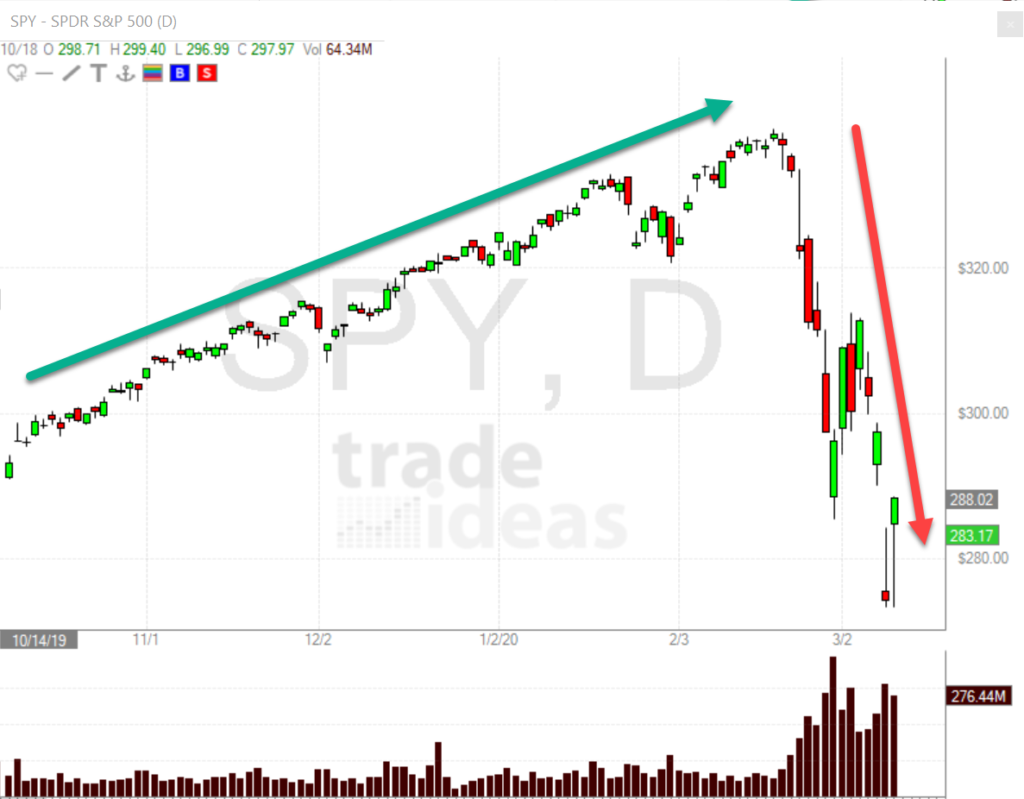You can prevent trading surprises by asking yourself 5 questions at the end of every trading day. But first some motivation for why.
It was pretty obvious just listening to it that we needed a new refrigerator. It sounded more like a clothes dryer than a fridge. As if the loud boisterousness wasn’t enough, every few months I would find a puddle of water in front of the freezer. I would roll my eyes knowing I had to clear the line from the freezer to the drain pan because it was clogged – again.
You would think that these subtle clues would have been enough to inspire us to replace it with a new one. When we’d settle on one I’d look at the reviews – not exactly confidence inspiring. Literally every refrigerator on the market, no matter how good the average ranking is, has some absolute horror stories among the one star ratings. We did, finally, take the plunge and got a new fridge a few days ago. I didn’t realize it when I placed the order, but it turns out that was the best decision I made in a long time for a reason I was completely unaware of.
I showed the delivery guys in and pointed to the existing fridge although I could have just told them to use their ears and follow what sounds like an airplane taking off. They pulled the fridge back from the wall to get it in position to remove and I heard one guy say “uh-oh – you’ve got a problem.”

Our fridge had been leaking from the water line for some time. Yikes! The boards in our hardwood floor were starting to buckle and I worried that I would have to replace these like I did in our bathroom about a year ago. How unlucky! As I looked closer and inspected the damage I realized that we weren’t unlucky at all but the decision to replace the fridge now was so much better than I initially thought for a reason I had no way of knowing at the time. Buying a new fridge now had allowed me to see this hidden issue before it became bad enough to require a major repair.
The Fridge Teaches us a Trading Lesson
What can we learn about trading from this lucky refrigerator incident? All of my trading strategies have various levels of automation. I haven’t manually entered a trade in my brokerage platform in many years. They’re all entered automatically with the correct size and all predefined stop orders and target orders eliminating my all-to-often human error.
The ease of trading this way gives you more capacity as a trader. Since you’re not calculating position size in your head and then fumbling around in a clumsy interface to enter orders, you free your valuable time to trade more profitable strategies. The math is simple: if you can manually initiate a trade every 30 seconds but since you can automatically (or semi-automatically) enter them every 5 seconds (or even 0 seconds) then you have more time to enter more trades in a small amount of time.
I highly recommend this approach and have spent the better part of a decade automating all my strategies to the fullest extent possible.
Remove discretion, eliminate mistakes, increase your trading capacity – what can go wrong? Sounds like nothing but positive outcomes can occur, right? While this is mostly true, there is a hidden downside that you need to be aware of: increased risk of neglect.
It’s easy to set up the automation and forget about it and that’s what many traders imagine automated trading to be. But that’s not the case at all. Trading strategies are not static because the market is always changing. For example, here’s a chart of SPY from fall 2019 to the current time – a great example of a stark change in the overall market. Do you think your trading strategy behaves the same way in these two distinct market types? Doubtful!

You should understand how your strategy performs in different market types and look for clues along the way to challenge and support your theories. The continually changing overall market is just one of the many things that can cause your strategy to change over time. This most recent market change was obvious to everyone but a lot of changes can happen very slowly over time and, like my refrigerator leak, are barely noticeable at all.
Find your Trading Leaks Before they Become a Problem
Automated trading is not automatic. It’s not like adding auto-pay to your monthly water bill and forgetting about it. It’s more like adding auto-pay to the family cell phone bill with 7 teenagers without an unlimited data plan – it requires diligent monitoring.
I resist the urge to watch my profit and loss numbers throughout the day, but I religiously do a trading recap every day after the market close. Here are a few of the items on my checklist:
- How did I trade today? (Note: a very different question than “How much money did I make today?”)
- Did my strategies perform as expected? Better? Worse?
- How does the backtest compare to the actual trades in my live account? Were there significant differences? Why?
- Did I miss any trades that I should have taken? If so, can I make an adjustment to take those missed trades in the future?
- Were there profitable trades that almost met my criteria but didn’t? If so, can the strategy be adjusted to capture them in the future?
Having a checklist of questions to go through at the end of every trading day will force you to keep tabs on your strategies and identify refrigerator leaks before they become a major problem. We have a tendency to look only at the top line P&L for the day but this hides a LOT of important details. As a bonus, this daily review is also fertile ground for generating new trading ideas for research and continual trading improvement.
